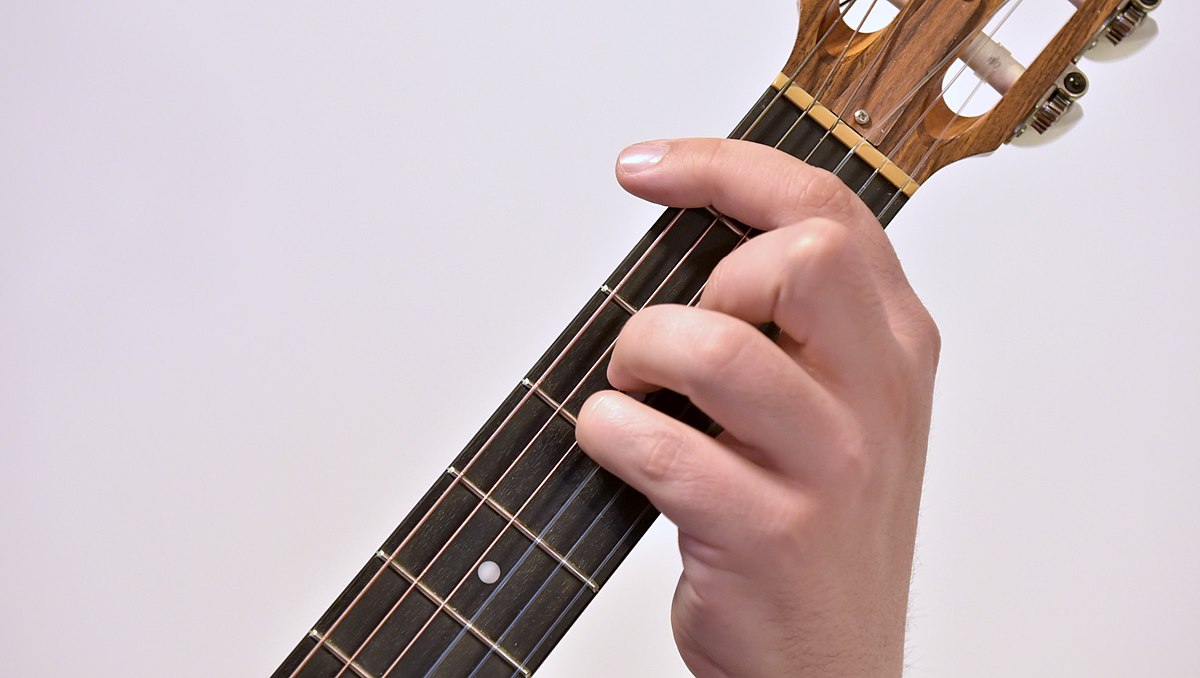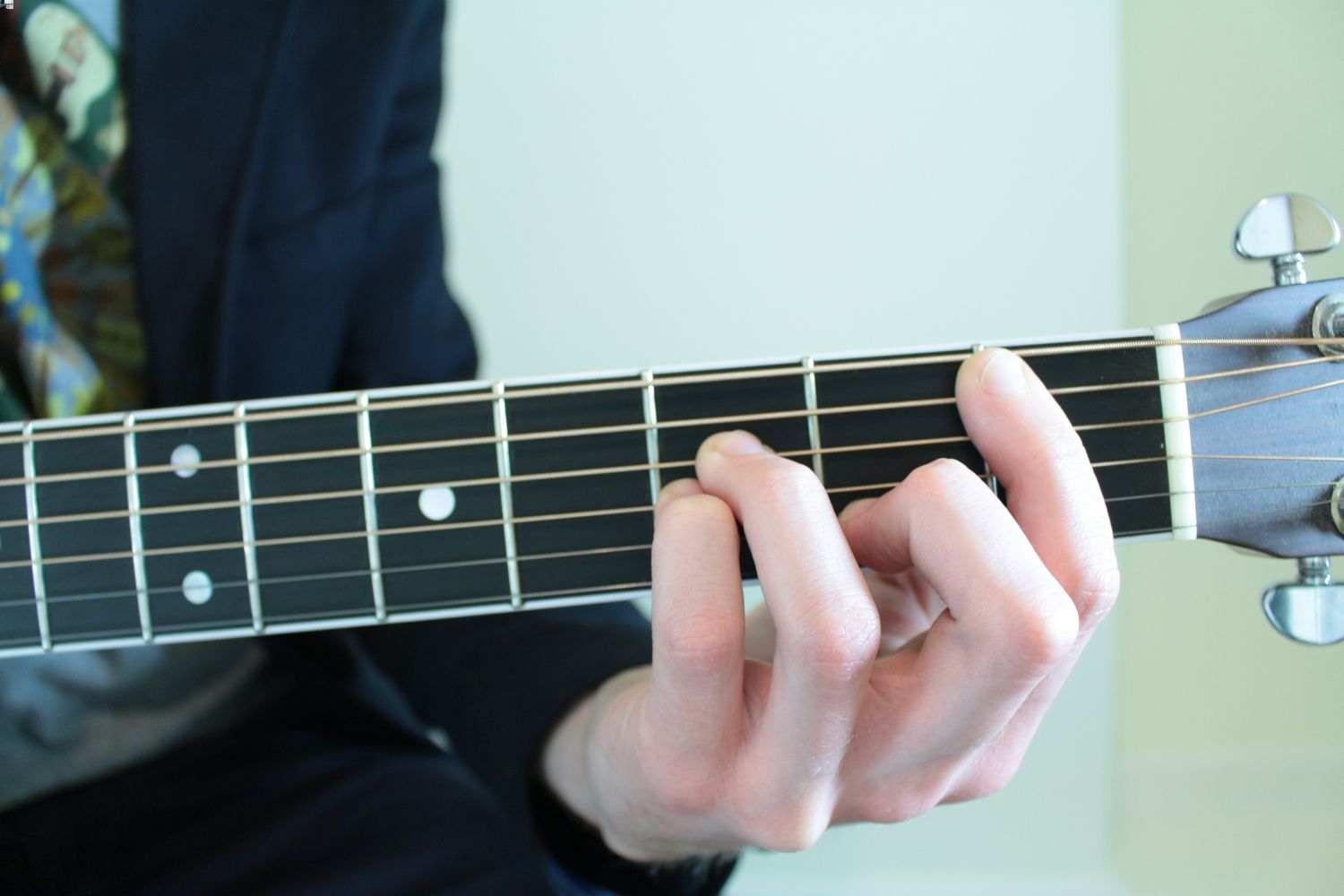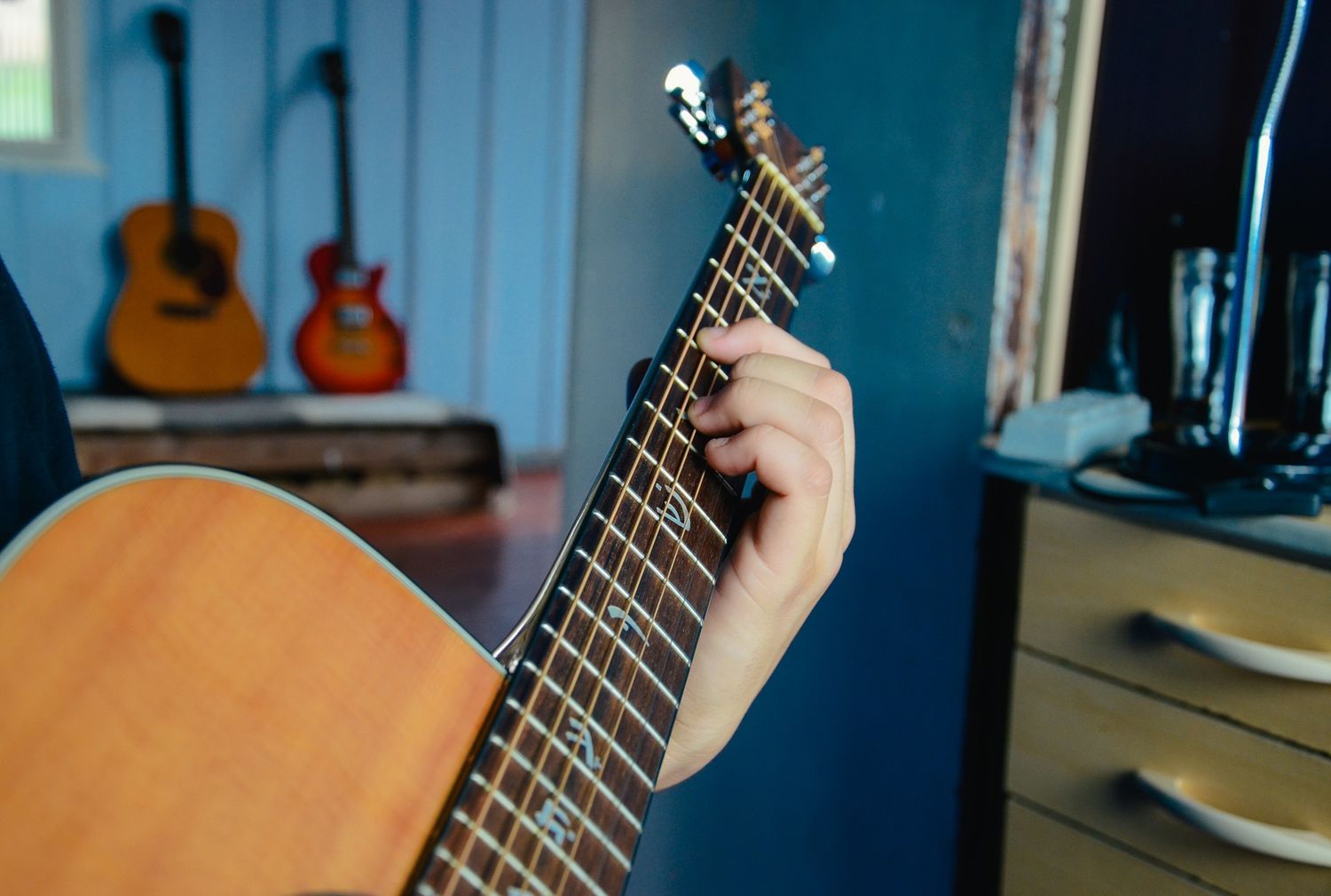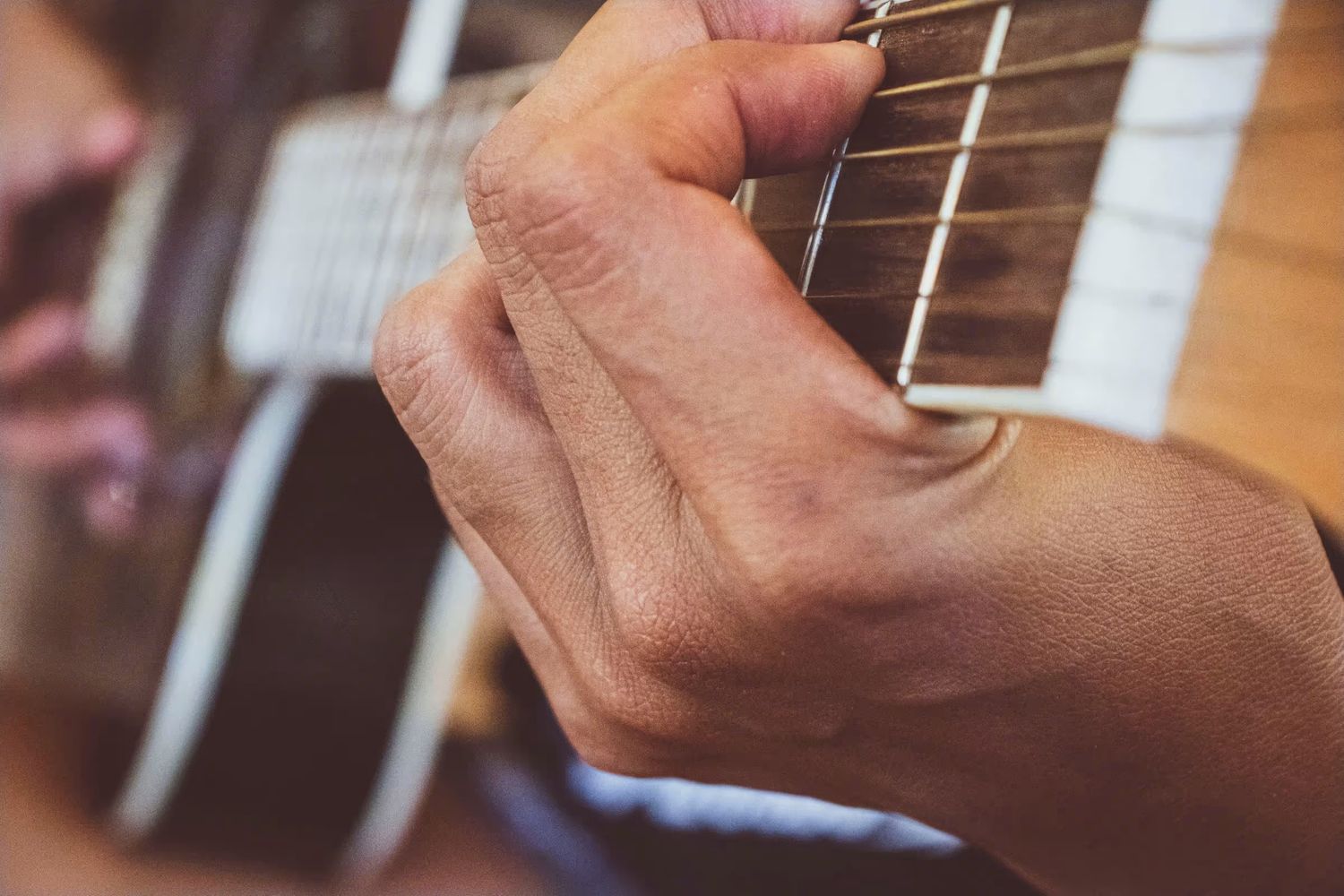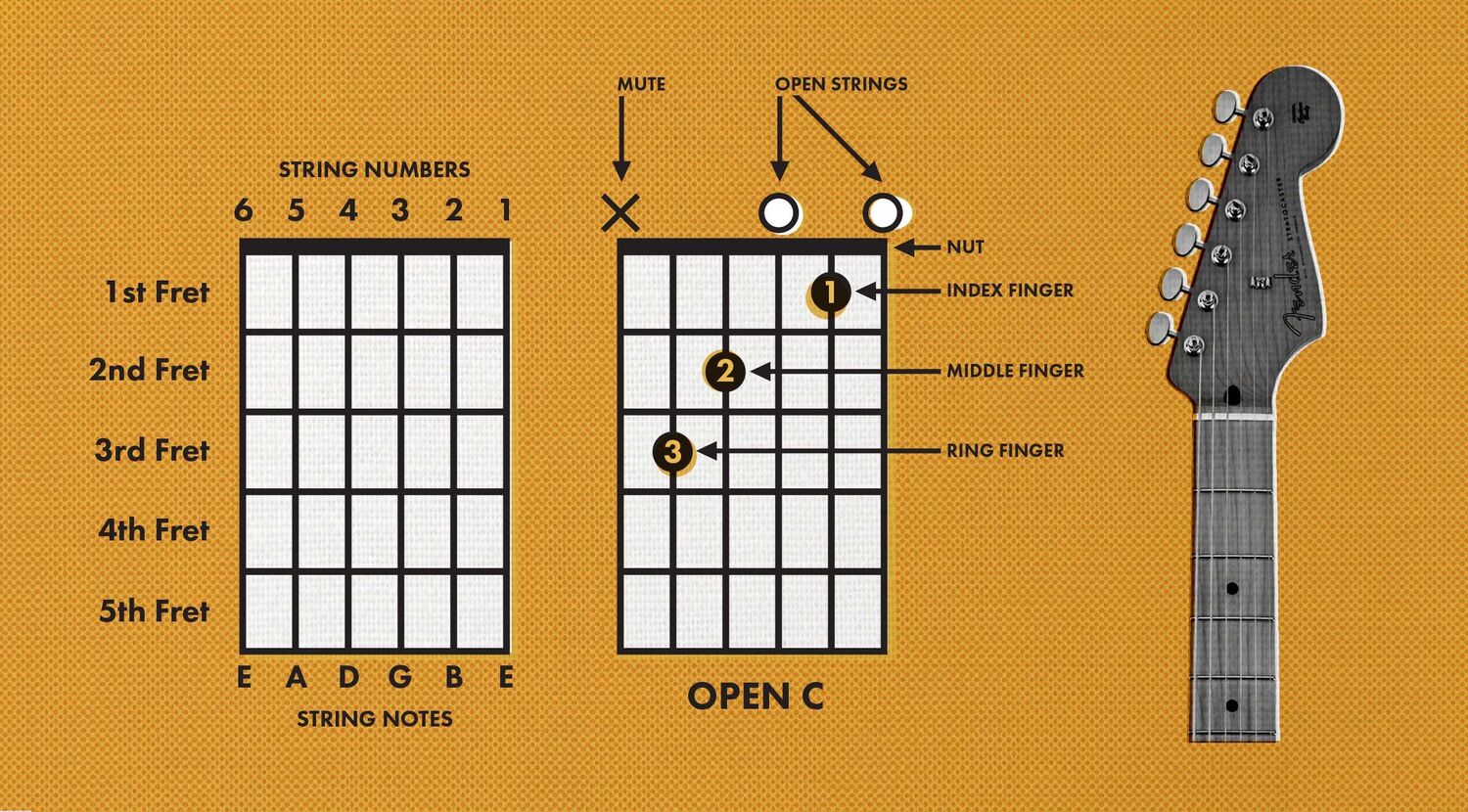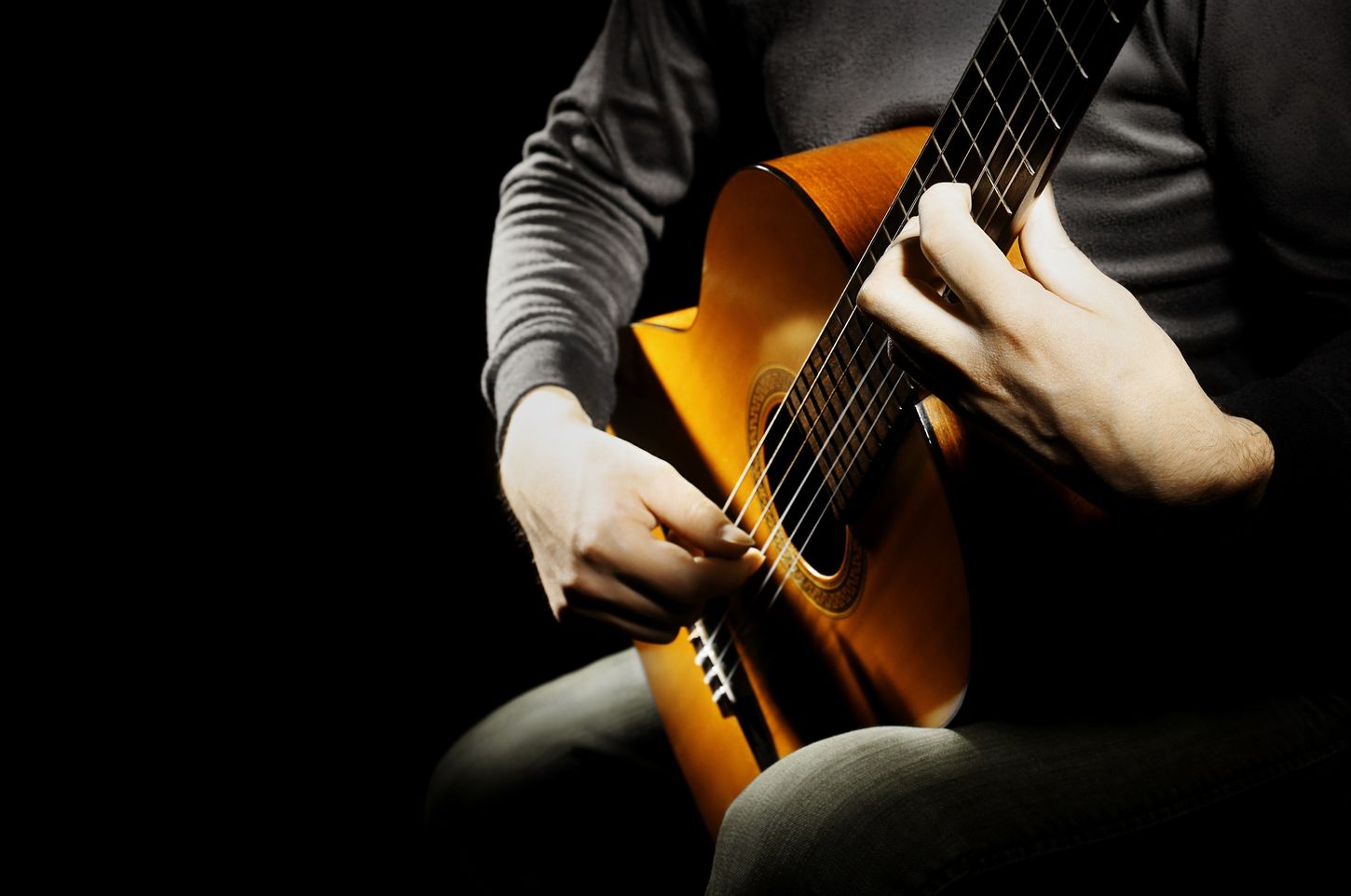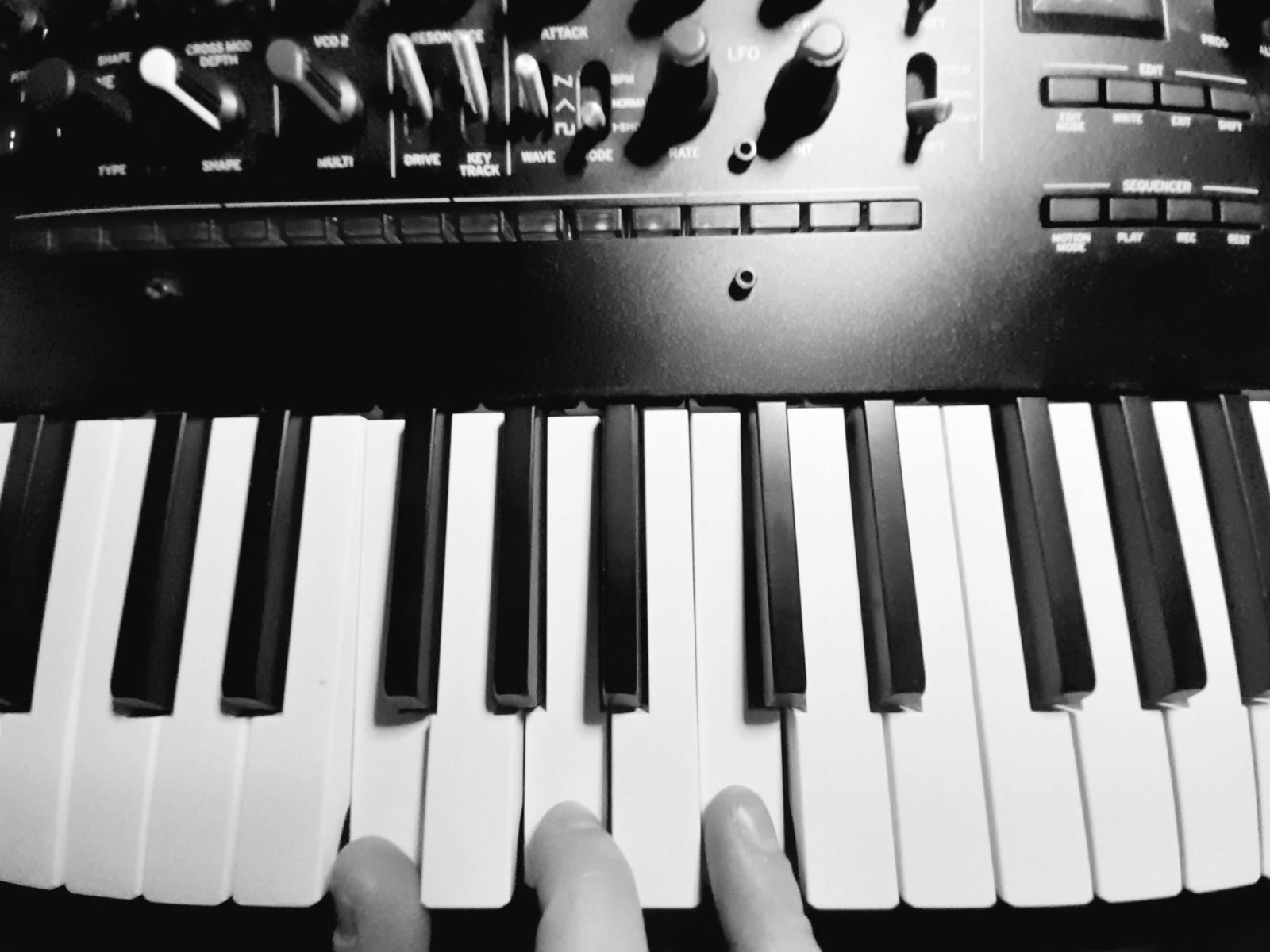Home>Instruments>Guitar>How To Play Power Chords On A Guitar


Guitar
How To Play Power Chords On A Guitar
Published: February 14, 2024
Learn how to play power chords on a guitar with our step-by-step guide. Master the essential techniques to level up your guitar skills today!
(Many of the links in this article redirect to a specific reviewed product. Your purchase of these products through affiliate links helps to generate commission for AudioLover.com, at no extra cost. Learn more)
Table of Contents
Introduction
Welcome to the world of power chords on the guitar! Whether you're a beginner or an experienced player, mastering power chords opens up a realm of musical possibilities. In this article, we'll delve into the fundamentals of power chords, exploring their structure, playing techniques, and offering valuable tips to elevate your guitar skills.
Power chords are a foundational element of rock, punk, metal, and various other music genres. Their raw, energetic sound has made them a staple in countless iconic songs, making them an essential skill for any aspiring guitarist. By understanding and mastering power chords, you'll be equipped to play a vast array of songs and even create your own powerful riffs.
Throughout this article, we'll guide you through the basic shape of power chords, explain how to play them on the guitar, and provide expert tips to enhance your technique. Whether you're strumming an acoustic guitar or shredding on an electric, the knowledge and skills you gain here will undoubtedly amplify your musical journey.
Let's dive into the world of power chords and unlock the potential of this dynamic and versatile guitar technique. Whether you're drawn to the aggressive crunch of rock or the relentless energy of punk, power chords are the gateway to unleashing your inner guitar hero. So, grab your guitar, plug in your amp, and get ready to embark on an exhilarating musical adventure with power chords as your trusty companions.
What Are Power Chords?
Power chords are the backbone of many iconic guitar-driven songs, renowned for their bold and aggressive sound. They are a staple in rock, punk, and metal music, known for their simplicity and raw energy. Unlike traditional chords, power chords are comprised of just two or three notes, making them versatile and easy to play across the fretboard.
At their core, power chords are built on the root note and the perfect fifth interval, omitting the third that defines major or minor tonality. This omission of the third creates a harmonically ambiguous quality, allowing power chords to seamlessly complement diverse musical styles. The absence of the third also contributes to their distinctive sound, characterized by a robust and assertive tonality.
One of the defining features of power chords is their movable shape. This means that once you learn the basic power chord form, you can effortlessly shift it up and down the fretboard to play different chords. This versatility makes power chords an invaluable asset for guitarists, enabling them to navigate through various keys and create compelling musical progressions with ease.
Furthermore, power chords can be played on both electric and acoustic guitars, making them accessible to players across different musical preferences. Their adaptability and straightforward structure have solidified their status as a fundamental skill for aspiring guitarists, offering a gateway to the captivating world of riff-driven music.
Whether you’re drawn to the anthemic power of classic rock or the high-octane energy of punk, power chords serve as a unifying force across diverse musical genres. Their unmistakable sound and inherent versatility make them an indispensable tool in the guitarist’s arsenal, empowering players to craft compelling melodies and unleash their creative potential.
Now that we’ve explored the essence of power chords, let’s delve into the fundamental shape that forms the basis of this dynamic and influential guitar technique.
The Basic Power Chord Shape
At the heart of power chords lies a simple yet potent structure that forms the foundation of this essential guitar technique. The basic power chord shape consists of two primary notes: the root note and the perfect fifth. To visualize this on the guitar, consider the following example using the key of G:
- Fret on the 6th string: Place your index finger on the 3rd fret (G note).
- Fret on the 5th string: Position your ring finger on the 5th fret (D note).
This formation creates a G power chord, denoted as “G5.” The absence of the third note allows the power chord to maintain a neutral tonality, giving it a versatile and adaptable character. Additionally, the simplicity of this shape enables seamless movement up and down the fretboard, allowing you to play power chords in different keys with ease.
It’s important to note that power chords can also be played using three notes, incorporating an additional octave of the root note. This expanded structure further enriches the chord’s resonance and depth, offering a fuller sound while retaining the characteristic power chord essence.
When playing power chords, it’s crucial to maintain a relaxed yet firm grip on the fretboard, ensuring that each note rings out clearly. Experiment with the placement of your fingers to find a comfortable and effective positioning that suits your playing style. As you become more familiar with the basic power chord shape, you’ll discover the versatility and adaptability that defines this fundamental guitar technique.
Now that we’ve uncovered the core structure of power chords, let’s explore the techniques and nuances of playing power chords on the guitar, empowering you to harness their dynamic potential and infuse your music with their unmistakable energy.
Playing Power Chords on the Guitar
Mastering the art of playing power chords on the guitar opens up a world of sonic possibilities, allowing you to infuse your music with raw energy and captivating dynamics. Whether you’re wielding an electric guitar with overdriven distortion or strumming an acoustic guitar with fervent intensity, the technique of playing power chords remains a fundamental skill for guitarists across genres.
To play a power chord, begin by positioning your fretting hand on the guitar neck. Using the basic power chord shape we previously discussed, place your index finger on the root note and your ring finger on the perfect fifth interval. Apply gentle pressure to the strings, ensuring a clean and resonant sound without excessive fret buzzing.
When strumming a power chord, focus on precision and control. Aim to strike only the necessary strings, typically the lowest three to four strings, depending on the desired depth and richness of the chord. This targeted approach enhances the clarity and impact of the power chord, allowing each note to ring out with clarity and authority.
Experiment with varying degrees of palm muting to sculpt the character of your power chords. By lightly resting the edge of your picking hand against the strings near the bridge, you can create a muted, percussive effect that adds depth and rhythmic drive to your chord progressions. This technique is particularly prevalent in punk and hard rock music, lending a distinctive edge to power chord-driven compositions.
As you acquaint yourself with the tactile nuances of playing power chords, explore different strumming patterns and rhythmic variations to inject dynamism into your guitar playing. Whether you’re unleashing a relentless barrage of eighth-note power chords or crafting syncopated rhythms with a touch of swing, the versatility of power chords lends itself to an array of expressive possibilities.
Furthermore, integrating power chords with open chords and arpeggios can yield captivating harmonic textures, enriching your musical arrangements and compositions. By combining these diverse elements, you can craft compelling guitar parts that resonate with depth and complexity, showcasing the inherent flexibility of power chords within a broader musical context.
Now that you’ve gained insight into the techniques and nuances of playing power chords on the guitar, let’s delve into invaluable tips to enhance your proficiency and musical creativity when incorporating power chords into your repertoire.
Tips for Playing Power Chords
As you embark on your journey to master power chords on the guitar, consider these invaluable tips to refine your technique and elevate your musical prowess:
- Focus on Clarity: When playing power chords, prioritize clean and precise fretting to ensure that each note resonates with clarity and definition. Pay attention to your finger placement and apply consistent pressure to the strings for optimal sound quality.
- Experiment with Amplification: Explore the sonic potential of power chords by experimenting with different levels of amplification. Whether you’re dialing in overdriven distortion on an electric guitar or embracing the natural resonance of an acoustic instrument, varying levels of amplification can imbue your power chords with distinct tonal characteristics.
- Dynamic Control: Embrace dynamic expression in your power chord playing. Experiment with subtle volume swells, accentuated strumming, and nuanced palm muting to imbue your chords with a rich and varied sonic palette.
- Explore Alternate Tunings: Venture into alternate tunings to unlock new creative possibilities with power chords. Whether you’re delving into drop tunings for heavier riffing or experimenting with open tunings for expansive chord voicings, alternate tunings can inspire fresh perspectives and innovative musical ideas.
- Integrate Rhythmic Variations: Infuse your power chord progressions with rhythmic diversity. Experiment with syncopated rhythms, offbeat accents, and unconventional time signatures to inject vitality and intrigue into your guitar playing.
- Combine Power Chords with Effects: Embrace the realm of guitar effects to enhance the sonic impact of your power chords. From classic distortion and fuzz to atmospheric reverbs and modulations, effects pedals can expand the tonal range of your power chords, adding depth and dimension to your sound.
- Ear Training and Song Analysis: Hone your ear for power chord progressions by learning songs from diverse genres. Analyze the chord structures and rhythmic patterns employed in iconic tracks, and use this insight to inform your own creative endeavors.
- Embrace Creative Exploration: Cultivate a spirit of creative exploration and experimentation with power chords. Allow your musical intuition to guide you as you craft original compositions and inventive arrangements, harnessing the expressive potential of power chords to convey your artistic vision.
By integrating these tips into your practice regimen and creative pursuits, you’ll fortify your command of power chords and unlock boundless opportunities for musical innovation and expression.
Conclusion
Congratulations on embarking on a captivating exploration of power chords on the guitar. Through our journey, we’ve uncovered the foundational elements, techniques, and creative possibilities that define this essential aspect of guitar playing. From the raw energy of rock to the unyielding drive of punk, power chords serve as a conduit for unbridled musical expression, empowering guitarists to craft compelling melodies and dynamic compositions.
As you’ve delved into the intricacies of power chords, you’ve gained insight into their versatile nature, harmonically ambiguous essence, and their ability to transcend genre boundaries. The fundamental power chord shape, comprised of the root note and perfect fifth, forms the cornerstone of this dynamic technique, offering a movable structure that facilitates seamless exploration across the fretboard.
Furthermore, our exploration of playing power chords on the guitar has illuminated the importance of precision, dynamic control, and creative experimentation. Whether you’re navigating through invigorating chord progressions, integrating power chords with effects, or venturing into alternate tunings, the potential for sonic innovation and artistic expression knows no bounds.
Remember, the journey of mastering power chords is as much about creative exploration as it is about technical proficiency. Embrace the nuances of dynamic expression, rhythmic diversity, and harmonic exploration as you weave the unmistakable energy of power chords into your musical tapestry.
As you continue to hone your skills and expand your musical horizons, keep in mind the invaluable tips provided to refine your technique and invigorate your creative endeavors. Whether you’re crafting anthemic riffs, propulsive rhythms, or evocative compositions, the influence of power chords will resonate throughout your musical journey.
With each resonant strum and fervent power chord progression, you’re not only mastering a fundamental aspect of guitar playing but also tapping into a boundless wellspring of musical expression. Embrace the inherent versatility and captivating allure of power chords as you forge your path as a guitarist, and let their unyielding energy propel you toward new heights of musical creativity and sonic exploration.
So, pick up your guitar, unleash the commanding resonance of power chords, and embark on a musical odyssey fueled by the unmistakable energy and dynamic potential of this foundational guitar technique.

